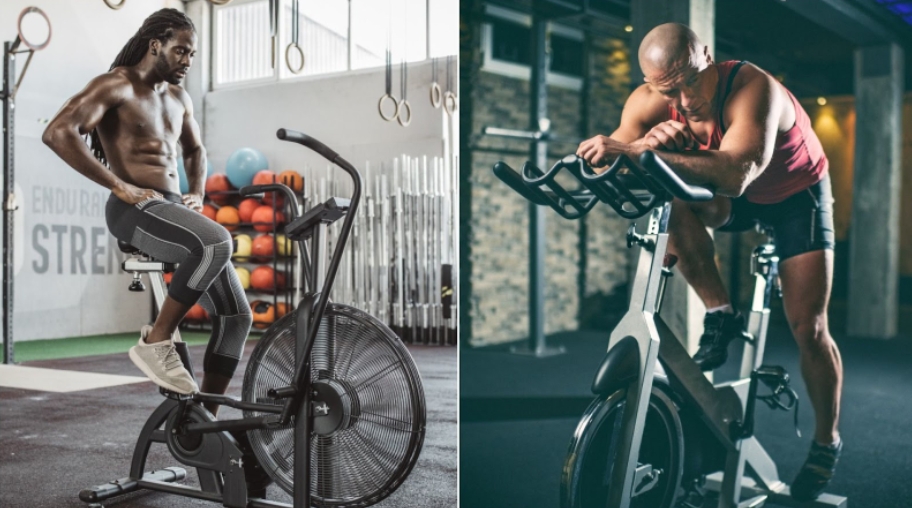If you’re looking for a reliable, effective way to improve your cardio fitness, lose weight, or simply stay active at home, upright bikes are a top choice. By fitting a set of these compact machines in your living room, you are taken into the outdoor cycling adventure, but without straining your knees and other body joints. Over my years as a fitness coach, I’ve seen countless clients fall in love with upright bikes for the simplicity, convenience, and results they offer.
All you have to do is ask my client Emma. She missed going to the gym due to a lack of time and intimidation at the gym. She began to take a 20 minute ride on her upright bike in the morning whether it is raining or it is the morning or afternoon time. During the three months, she shed 18 pounds and reduced her resting heart rate, regaining vigor.
Key Takeaways
- Upright bikes offer effective, low-impact cardio training in a compact design.
- They also assist people in burning calories, gaining endurance, and improving heart health.
- These are the bikes that are easy to ride but still challenging to experienced cyclists.
- Their choice of the model should represent such features as the level of resistance, the comfort of the seat, and technology.
What Are Upright Bikes and Why Do They Matter
Upright bike resembles the riding experience on a road bike, because the frame is vertical, and the pedals are located below your hips. Unlike recumbent bikes, upright bikes allow you to stand up during sprints and adjust resistance more dynamically. This is what makes them perfect for interval training and steady-state cardio training as well.
What makes upright bikes so effective?
- They hit on your quadriceps, your hamstrings, your glutes, and your calves.
- They advance cardiovascular stamina and VO2max.
- Since your upper body is involved as well, you receive a little bit of core activation.
- They are easier on your joints, and they are the best option for a person with a knee problem or one who is recovering from some mild injuries.
The Advantages You Will Feel
Here’s what users usually report after consistent use of upright bikes:
- Increased endurance when performing daily tasks such as climbing a flight of stairs or walking up a hill.
- Feeding weight loss – Just like any other form of exercise, riding 30 minutes a day can burn 250+400 calories.
- Good mood, courtesy of the endorphin release, courtesy of regular cardio sessions.
- Workouts that are joint-friendly, and therefore one easily adheres to the regime without experiencing pain.
- Better posture, since riding in an upright position will have an effect of strengthening your core and back muscles.
There is one story to point at, Jack was a desk worker who had chronic lower back pain and began to ride an upright bike as a routine, and found himself relieved of the pain. He had become stronger and more able within six weeks without having to pay a hefty amount of money to get into the arms of a physical therapist.
Types of Upright Bikes
You’ll find a few different types of upright bikes on the market:
- Standard Upright Bike: Mechanical, with adjustments of resistance through dial or knob.
- Magnetic Resistance Bike: Incredible, silent riding experience, and a smooth feeling going by.
- Smart Upright Bike: It has its touchscreens and can connect to fitness apps in addition to virtual classes.
- Fan Bike (Upright Air Bike): Implies the use of wind resistance and the possibility to perform workouts throughout the body with the help of handles.
Every type is good in its way. In case you intend to ride in the morning, a magnet or smart bike is suitable. It does not disturb neighbors because it is quiet.
Step-by-Step: How to Get Started
- Raise/lower the seat such that there is an angle of say about 25 degrees in the bottom pedal stroke.
- Adjust the handlebars at a position that maintains your shoulders in a relaxed position and straight back.
- Warm up with test resistance for 3-5 minutes.
- Beginners are to start with 10 15-minute sessions and later progress to 30 45-minute sessions.
- At resistance: alternate high-intensity and moderate-intensity sprints.
- Make it easier by giving yourself 5 minutes of recovery pedaling using a low resistance.
Mistakes to be Prevented
Insufficiently trained horsemen make mistakes, too. These are the top ones to watch out:
- Seat height is too high: This also makes you strain your knees.
- Forward leaning: Slouching reduces performance and even causes back pain.
- Spinning: Pedaling fast with minimal resistance does not count as cardio.
- Neglecting care: Clean your sweat after every exercise, and maintain the chain or belt.
Integrating Upright Bikes Into Your Routine
Strength and flexibility training should be done in combination to balance with the upright bike exercise:
- Monday: 20-minute medium cycling session + upper-body exercise
- Wednesday: Work out of 30 min (minutes of hard / minutes of easy) 1/2
- Friday: 45 minutes endurance ride
- Saturday: Active recovery – yoga or mobility drills
You will improve cardiovascular health and energy with only three to four sessions a week without overtraining.
Where to Buy the Best Upright Bikes
Are you interested in investing? Beginning with these familiar brands:
- Schwinn: A trusted brand because of its durability and good warranty after sales.
- NordicTrack: Intelligent bikes – interactive coaching and classes.
- Peloton: Includes community and quest-like features in case you want the energy of a group inside your home.
- Sunny Health: Excellent budget products, no compromise on quality.
You will be able to compare models and prices on retailers such as Amazon, Dynamo Fitness, and Rogue Fitness. Seek the resistance models that have at least 100 lbs of resistance settings, adjustable seat and handlebar positions, and durable frames with the capacity to handle heavy users.
Real-Life Story: Couch to 5K on Wheels
Another anecdote: Olivia suffered shin splints and could not stand running, so she switched to an upright bike. She was put in 10-minute sessions thrice a week. By developing endurance, she introduced hill intervals and increased her time twofold. She biked 5K virtually three months later and subsequently registered in a charity ride. Upright bikes gave her confidence and results, without the injury risk she faced with running.
Conclusion
Upright bikes are a fantastic way to bring structured, effective cardio into your daily life. They are small, joint-cognizant, and suitable to every fitness level. Not only that, but they make you fit, get your metabolism going, and feel better, in general.
Being an early bird, occupied-with-kids-parent, or an injured person, this machine will allow you to achieve your fitness goals, hassle-free. So get on board, set your programming to sync your speed and long ride to a healthier future.





























